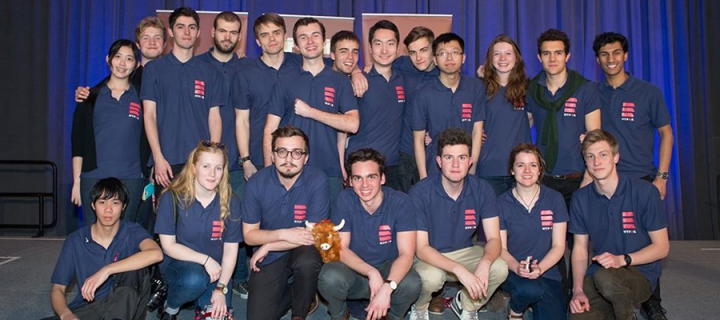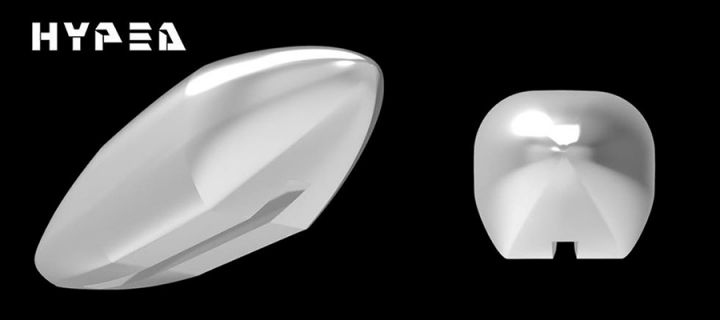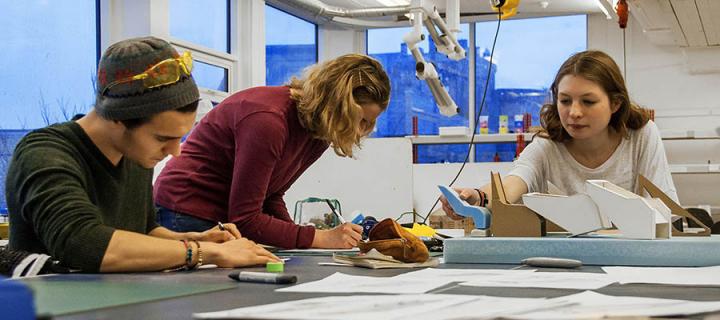The future of travel
Award-winning student team, HypEd, discuss the challenges and thrills of engineering a new, superfast mode of transport.

Wouldn’t it be great to get from Edinburgh to London in just 35 minutes? That might one day be possible through a new mode of transport called Hyperloop that would see passengers travelling in bullet-like pods at incredible speed in an evacuated tube.
International competition winners
Conceived by Elon Musk, CEO of aerospace manufacturer SpaceX, a worldwide competition was launched last year to accelerate the development of a functional prototype. Over 1200 teams entered the Hyperloop Pod Competition, but only 120 were invited to the design weekend in Texas at the start of the year.
HypEd, a team of students from the School of Engineering and the School of Design, were one of only two UK teams to make the cut. They were given the chance to present their concept – laid out in a 30 page proposal - and showcase their designs (using a downscaled 3D-printed model and interactive media) to an expert panel of judges comprising SpaceX employees and leading professors, as well as the general public.
Recognised for their outstanding technical insight
, HypEd brought back a Subsystem Technical Excellence Award. Key to this win was the design of the passenger experience and modularity, to which the team took a unique approach. Other important aspects were the battery and control circuit - the brain of the system
- led by Justas Lukosiunas, a 3rd year electrical and electronical engineer.
Student-driven innovation

Adam Anyszewski, initially in charge of the levitation team, explains that HypEd started out as a few engineers keen to tackle a technical challenge. The welcome expansion of the team to include product designers meant that the passenger experience and comfort could be properly addressed. This balanced consideration was highlighted by judges as a particular area of success, as it brought the futuristic concept to a human user level.
As you would expect, there was a vast amount of work and organisation required to get the team ready for the Design Weekend. Adam recounts arriving at King’s Buildings at 7am for a few weeks at a time with fellow teammates to work on the project before class. He credits the team’s drive for creating and delivering a coherent Hyperloop proposal.
Interdisciplinary collaboration
Working with students from another school on an extra-curricular project requiring specialist tools has its challenges: different coursework deadlines, different campuses and different timescale for designing, say, a chair versus a subsystem.

Nevertheless, these carry with them huge potential for learning, as noted by Joe Revans, who leads the design team, and who became very aware that selling an idea to engineers is different to selling an idea to my tutors
.
It’s an iterative process with a lot of back and forth, but the team recognise that this is how it works in the industry and that this experience is invaluable. Having worked on various elements, such as the compressor and modularity, Tim Putzien agrees and acknowledges that communication in a team can be difficult but it’s also a good learning curve
.
Growing ambitions
With their team now set up as a student society, Adam, the president, is pleased to report that HypEd are receiving a lot of interest from potential new teammates, with some even sending in CVs and letters of motivation.
HypEd’s plans for growth are three-fold. Firstly, there's ongoing work on popularising the concept at the University and beyond, looking for industrial partnerships and preparing for next year's round. The team also want to develop a business case for Hyperloop and reach out to students in the School of Economics and the Business School. Further work on the technical aspects (such as air bearings, electromagnetic brakes and pod-to-pod communication) of the concept is also in the pipeline.
As the team’s ambitions grow, so too does the cost of realising their ideas, and the need to access the facilities and networks vital to their development. There are more challenges ahead, but with the university community taking note and the students’ drive and talent, HypEd are hopeful of building on their success.
Students are hungry for opportunities to apply their knowledge especially when linked to cutting-edge, very modern technology. It gives us a chance to create coherent and brave design out of a vague concept and allows us to exercise creativity and confidence in the field.
Related Links

